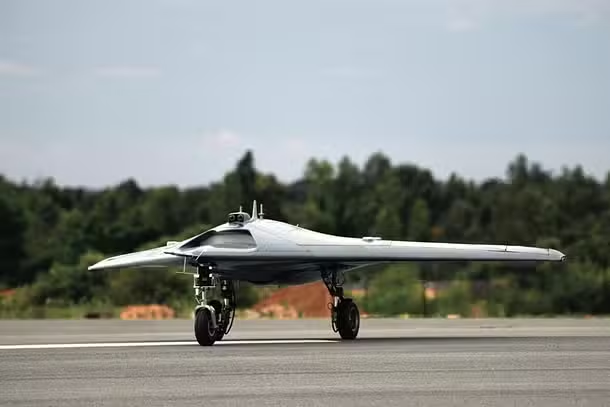In a pivotal move for its unmanned combat aerial vehicle (UCAV) program, the Indian Air Force (IAF) has approved the Defence Research and Development Organisation (DRDO) to evolve the Stealth Wing Flying Testbed (SWiFT) into a fully operational 1-ton UCAV. Originally intended as a technology demonstrator, SWiFT is now set to perform mini-bomber strikes as well as intelligence, surveillance, and reconnaissance (ISR) missions, marking a significant expansion in its operational capabilities.
This decision underscores the IAF’s increasing focus on integrating stealth unmanned platforms into its military operations. Recognizing the vital role these advanced technologies play in modern warfare, the IAF aims to enhance survivability and precision in combat scenarios where traditional manned aircraft may face heightened risks.
SWiFT was initially designed to evaluate key technologies related to stealth, aerodynamics, and unmanned flight for future UCAV endeavors. With the latest approval, it will transition into a frontline combat platform equipped to operate effectively in contested airspace. To bolster its stealth features, the operational version of SWiFT will include an internal weapons bay—an essential design element that minimizes radar visibility by concealing munitions within the aircraft’s structure.
The UCAV will be powered by the Small Turbo Fan Engine (STFE), the same engine used in India’s Nirbhay cruise missile. This indigenously developed engine is compact yet powerful, ensuring optimal performance for a range of missions, including precision deep strikes and ISR operations. The successful integration of the STFE into the Nirbhay missile highlights its reliability for this next-generation unmanned system.
SWiFT is designed with a payload capacity of 1 ton, allowing it to undertake both offensive operations and robust reconnaissance missions. Its capability as a mini-bomber positions it to execute precision strikes against high-value targets deep behind enemy lines while maintaining a low radar signature. Furthermore, its advanced sensors and extended flight endurance enhance its effectiveness in ISR missions, providing real-time intelligence to ground forces and aiding critical decision-making processes in fast-evolving combat scenarios.
The initiative to develop stealth UCAVs like SWiFT signifies a strategic evolution in India’s aerial warfare tactics, reinforcing the country’s commitment to operating undetected amid increasingly sophisticated global air defense systems. By investing in these unmanned platforms, the IAF not only ensures enhanced survivability but also secures the ability to execute high-stakes precision strikes and gather vital intelligence without endangering pilots’ lives.
This development aligns with a broader global trend toward unmanned military systems. As defense analysts note, the increasing reliance on UCAVs, capable of executing “dull, dirty, and dangerous” missions, emphasizes their value in modern militaries. The progress of the SWiFT program illustrates India’s dedication to being at the forefront of technological advancement in aerial combat.





